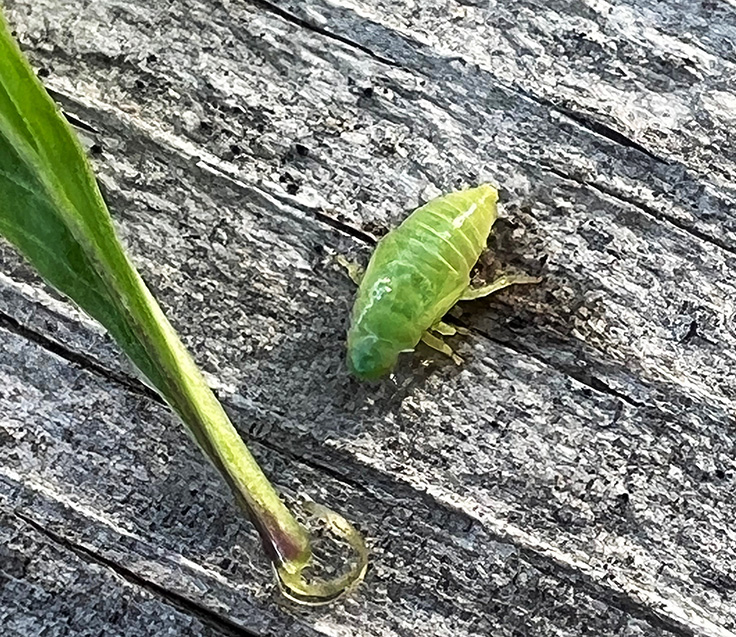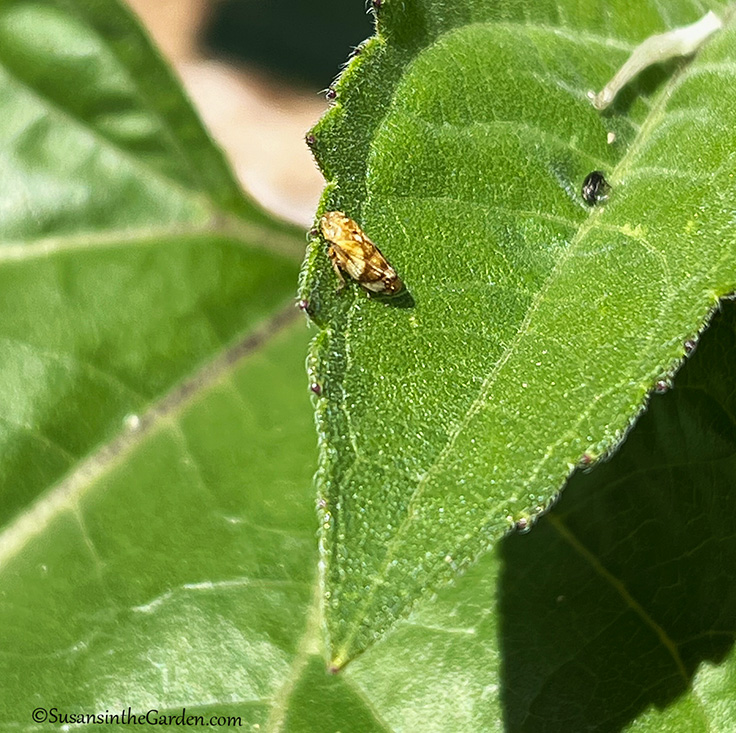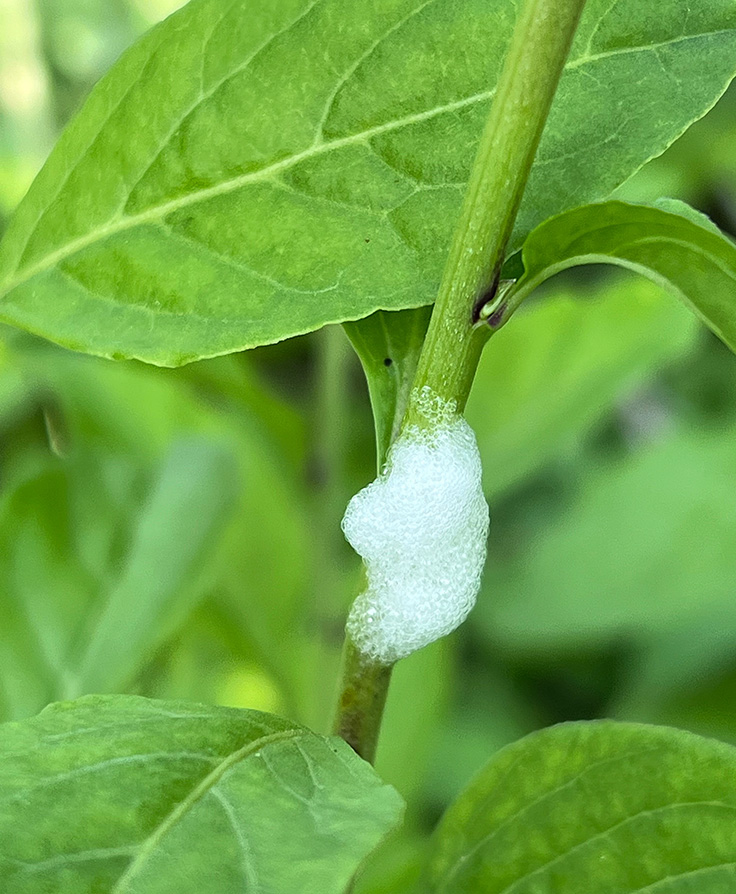Spittlebugs
Family name: Cercopidae
Size: 1/4 inch
Color(s): Nymph color changes as they grow, going from orange to green, and they have red eyes. Adults are mottled brown and are known as froghoppers because of their strong back legs that they use for jumping.
Life cycle: The tiny, white eggs overwinter in leaf litter. The nymphs emerge in the spring and feed near the base of a stem on plants, while slowly working their way up. The nymphs secrete bubbles for protection from predators and also because they need to keep their bodies moist. Nymphs will pierce plant stems and suck the juices. They require 5-8 weeks to mature, going through several molts. Once they are adults, they move to grassy areas or pastures. In the fall, the adult females lay eggs and deposit them in leaf litter and plant debris. They only have a single generation per year.
Signs of their activity: The most obvious sign is frothy bubbles on plant stems (refer to additional photos below). You might also spot the froghoppers on a plant leaf; as soon as you reach toward them, they will jump away!
Typically seen on: Nymph bubbles are commonly seen on strawberry stems but I’ve also seen them on the stems of currant bushes, legumes and other plants.
Controls: The great news is that there is no need to control them! Even though the nymphs suck the juices from plants, their activity doesn’t damage the plants. If you want to hose them off of the plants, that’s an option. Since spittlebugs only have a single generation, their population tends to stay relatively small. Some of the sources I consulted recommended keeping up with the weeds in and around your garden to remove a food source for them. You can also handpick the nymphs. It’s also important to realize that no control products will work because the bubbles protect the spittlebug nymphs. Birds will prey upon the adults.
Natural predators: Assassin bugs, minute pirate bugs, syrphid fly larvae, harvestmen (“daddy longlegs”) and spiders. Both the eggs and nymphs are preyed upon by parasitic wasps.
Back to Organic Pest Control



